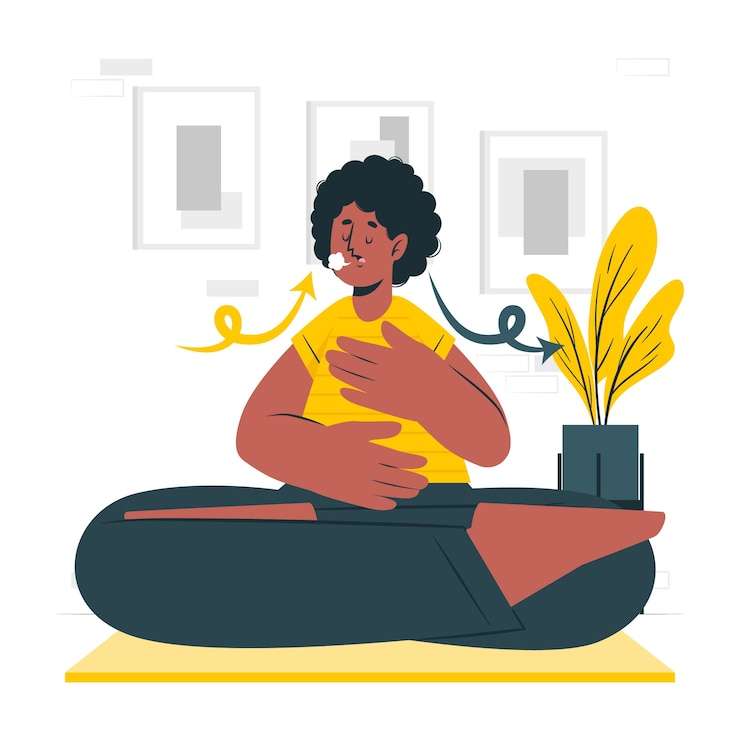Deep breathing is a technique that can be used to relax the body and mind. It involves taking slow, deep breaths through the nose, filling the lungs with air, and then exhaling slowly through the mouth. This type of breathing has many benefits, including reducing stress and anxiety, improving sleep quality, and improving overall health.
Benefits of deep breathing
- Deep breathing is one of the most simple and effective ways to relax the body and mind.
- Additionally, deep breathing oxygenates the blood, which helps to improve our overall energy levels. There are many other benefits of deep breathing as well. It can help to reduce stress levels, improve circulation, boost immune function, and even promote better digestion.
- Deep breathing helps reduces cortisol levels. It improves sleep, reduces stress, and reduces muscle tension.
- Deep breathing improves the state of alertness, attention, orientation and working memory. It results in the improvement of cognitive and perceptual.
- Research studies have revealed that continuous practice of diaphragmatic breathing for a certain period of time helps in reducing systolic and diastolic blood pressures.
- The breathing technique helps in immediate psychological and physiological stress relaxation https://www.hindawi.com/journals/ecam/2021/5924040/.
How do you practice deep breathing?
You can practice deep breathing based on your comfort level. It can range from 2 minutes initially to about 10-15 minutes twice daily. You must increase the time and effort of the exercise gradually. Do not continue doing the exercise if you feel sick and seek immediate help from a medical professional.
Technique 1

- Take a comfortable position. Just lie on your back on a bed with a pillow under your head and knees. Alternatively, you can sit upright on a chair with your back supported against the chair.
- Breathe in through your nose and fill your belly. You can place one of your hand on your belly to feel the abdominal raise and the other on the chest.
- Breathe out completely, through your nose.
- The hand over your belly with move back and forth with the inhalation and exhalation.
- Continue the process till you feel relaxed and de-stressed (it can range from two minutes to 15 minutes)
Technique 2: 4-7-8 deep breathing technique
- Take a comfortable position. Just lie on your back on a bed with a pillow under your head and knees. Alternatively, you can sit upright on a chair with your back supported against the chair.
- Breathe in through your nose and fill your belly with a mental count of four. You can place one of your hand on your belly to feel the abdominal raise and the other on the chest.
- Hold your breath and count seven.
- Exhale completely through your mouth, emptying your stomach and lungs completely with a mental counting of eight.
- Repeat the process till you feel relaxed. You can practice this from two to ten minutes.
Technique 3: Pursed lip breathing
- Sit upright on a chair with your back supported against the chair in a comfortable position.
- Breathe in through your nose and fill your belly with a mental count of two.
- Breathe out through your puckered lips with a count of four seconds. The breath must be slow and steady. You can practice it for two to fifteen minutes based on your comfort and relaxation.
Precautionary measures
- There are no adverse effects of deep breathing exercises, when done in moderation and with correct technique.
- Big breathing is not similar to deep breathing. Fast and deep breath may be fatal.
- Excessive or over breathing may result in hyperventilation.
- Hyperventilation may make you feel lightheaded, fatigued, experience tingling sensations, tired, difficult to concentrate and remember things.
- Therefore, it is suggested to breathe slow and deep.

Comments are closed.